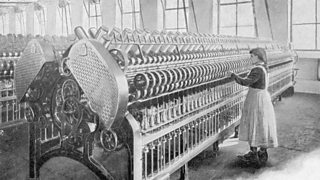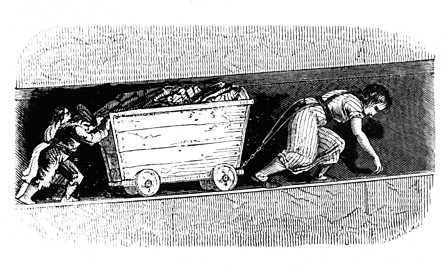Theme
Summer term
Our Summer 1 theme is... Egypt
Our Key Questions are:
- Why was the River Nile important to the ancient Egyptian Civiliation?
- How was death treated in Ancient Egypt?
- How reliable do you think the historical evidence is, that we use to learn about Anient Egypt?
Lesson 1: What is the chronology of Ancient Egyptian events?
We started this topic by working out a number of anagrams of key words that we will need for this topic. Some words were much easier to work out that others. We then matched the vocabulary to images and tried to explore what they meant.
We then worked in small groups to order historical events linked to Ancient Egypt.

Lesson 2: Where is Egypt?
Using a range or atlas' and globes, we explored where Egypt could be found. We then wrote as many facts as we could, about the location of Egypt.
We linked out recent understanding of using co-ordinates and direction to our understanding of grid references.

Lesson 3: Where is the River Nile and what is its importance?


We found out about the Ancient Egyptian calendar and how each season lasted four months.
The River Nile was important for farming. Once the river had flooded, it would leave behind rich, black slit that would fertilise the soil. This helped things to grow like wheat, barley, fruit and vegetables. Flax was also grown to make linen for clothes. There were lots of different fish in the River Nile. Farmers would go out fishing but would need to watch out for crocodiles!
The Ancient Egyptians would trade things like pottery, art and jewellery. They would travel up and down the River Nile to trade with others.
Mud from around the river was also useful to make bricks for building houses.
Lesson 4: What is the difference between life in Ancient Egypt and life today?
Children became so engrossed in the similarities and differences between Ancient Egyptian life and today that we spent two lessons exploring this.
Houses: We compared Ancient Egyptian homes with modern homes.

Jobs: Our class was divided into three groups, the Upper class, middle class and lower class. Each group explored the jobs that they would be during the ancient Egyptian time and then took part in drama activities before performing to the class.
Games: We listened to the audio or one of the BBC Bitezise videos while playing vocabulary bingo. We were then very keen to learn more about the diffferent types of games and compare them to the types of games that we play. To remind yourself about some of the games, click on the link to revisit the website we used... BBC Bitesize
Food: We looked at a range of images and thought about what there told us about the food that the Ancient Egyptians ate.
Lessonn 5: How was death treated in Ancient Egypt?
We learnt about the process of mummification. With Miss Radcliffe explaining the process with children taking part to held hold the canopic jars!




Lesson 6: What were the importance of the canopic years?
Having mentioned the canopic jars as part of the mummification lesson, we have to explore this in more detail!
Our Ancient Egyptian Theme Day
We had a great day dressing up as ancient egptians and exploring life at the time.




We found out about Howard Carter and what it must have been life to have found Tutankhamun's tomb. Our classroom was transformed into the tomb and we went in, exploring the artefacts withing each chamber, using little tourch lights.
Howard Carter was an archeologist. He is famous for leading the team that found the long-hidden tomb of Tutankhamun in the Valley of the Kings in Egypt in 1922.


We had an up close look at a range of artefacts.






During the afternoon, we created lots of fantastic pieces or art.










Spring term
Our Spring 2 theme is... A Passport to Europe
Our Key Questions are:
- What is the European Union?
- Where is Europe?
- Which countries can be found within Europe?
- What is a region?
- What are the human/physical features within contrasting localities?
Lesson 1: What countries are within Europe and where are they?


Lesson 2: What are the capital cities of some of the countries within Europe?
Click on the link to learn a song that names many of the capital cities in Europe.
Lesson 3: What is the European Union and what was Brexit?
EU stands or the European Union.
What the video to find out how how the countries work together as part of the EU.
The EU begin in the 1950s. It aimed to bring countries togethers so they could work together, help each other and made trade links. There were six countries who originally founded the EU. These being Germany, France, Italy, Luxembourg, the Neatherlands and Belgium. Over time more countries joined the EU.
The word brexit combines the word 'Britain' and 'Exit'. In June 2016, the UK voted to leave the EU. The vote was extremely close with 51.9% of people voting to leave the European Union and 48.1% of people voting to stay.

Lesson 4: What are the names of some of the mountains, rivers, oceans and seas within Europe?
Lesson 5: What are some of the key landmarks within Europe and are they human or physical features?
Lesson 6 : A study of Norway and comparison to the UK
Autumn term
Our Autumn 1 theme is… Sparks Might Fly



Our Key Question is:
- How did the Industrial Revolution change Britain?
Lesson 1: How did the landscape change during the Industrial Revolution?
Lesson 2: How important was the cotton industry in Burnley?
Lesson 3: Where where canals important in this era?
Lesson 4: What impact did the steam engine have on the Industrial Revolution?
Lesson 4: Who was Samuel Pepys and what did he tell us about the plague?
We learnt the difference between the words epidemic and pandemic.
Then we explored the Mortality Bill and found out the reasons for some of the deaths during the plauge.

We already knew a little about Samuel Pepys from our topic of The Great Fire of London, which we learnt about in Year 1.Today we read extracts from his diary from the time of the plague. After reading his diary we took on the role of reporters. Some of us were news reporters and some of us were Samuel Pepys. The reporters interveiews Samuel Pepys about his thoughts, feelings and views on the plague. We then used that information to write newspaper articles.
Lesson 5: Did the plague spread outside London? What happened in Eyam?
Using maps and atlas' we located London. We then heard about other areas affected by the plague. We learnt how a little village in Derbyshire became infested by the plague and locaged Eyam with the maps and atlas too.

Reverend William Momprsson who who worked in the village, and his wife, had a plan to contain the plague and stop it spreading to nearby villages. One of the most important parts of the plan was to set up a Cordon Sanitaire or quarantine. This was a line which went around the outskirts of the village. No Eyam resident was allowed to pass it. They also had signs, warning travellers not to enter the village.
The village still needed goods and supplies though. The Earl of Denonshire helped by providing supploes that were left at the southern boundary of the village. Villages left their money in a water trough that was filled with vinegar as they realised that vinegar helped to kill the disease. Chursh services took place in the open air rather than people sitting together on pews and those that died were buried as quickly as possible, reducing the risk of the disease spreading further while people were waiting to be burried.
Although the village of Eyam saved many lives by preventing the spread of the plauge, it did mean that the their had a very high propotion of deaths with 260 people dying out of the 800 residents in the village. Some families were wiped out completely.
Lesson 6: What happened in 1666 that caused the decline of the plague?
There is a lot of information about the plague that can be found on the BBC Bitesize website
BBC Bitesize has lots of information to answer this topic.
Play the History game and explore the industrial Revolution in more detail. Be a detective and explore whether the mill owners were cruel to children.
At the end of this topic we will be visiting Astley Hall. This will conclude our Industrial Revolution topic and begin our Plague topic.
Our Autumn 2 theme is… The Plague
Our Key Questions are:
- What were the different types of plagues and how did people catch them?
- What impact did the plague have on London?
- What did the plague doctor look like?
- Why did the plague spread so quick?
- What happened in 1666 that reduced the number of deaths from the plague and how do we know?
- Did the plague spread outside London?
Lesson 1: What was the plague?
Lesson 2: What was the signifficance of the plague doctor?
Lesson 3: What was it like to live in London during the plague?
Lesson 4: Who was Samuel Pepys and what did he tell us about the plague?
Lesson 5: Did the plague spread outside London? What happened in Eyam?
Lesson 6: What happened in 1666 that caused the decline of the plague?
There is a lot of information about the plague that can be found on the BBC Bitesize website.
 Reedley Primary School
Reedley Primary School












